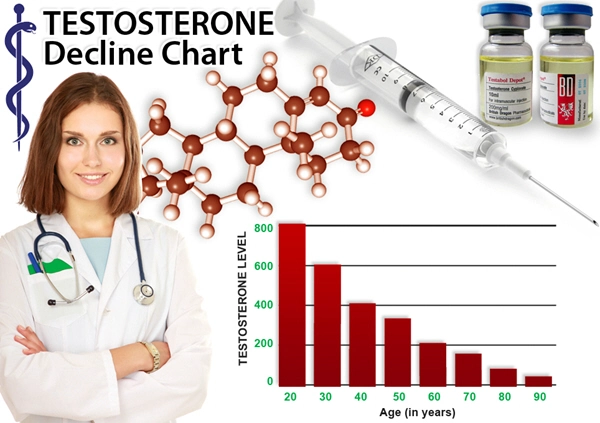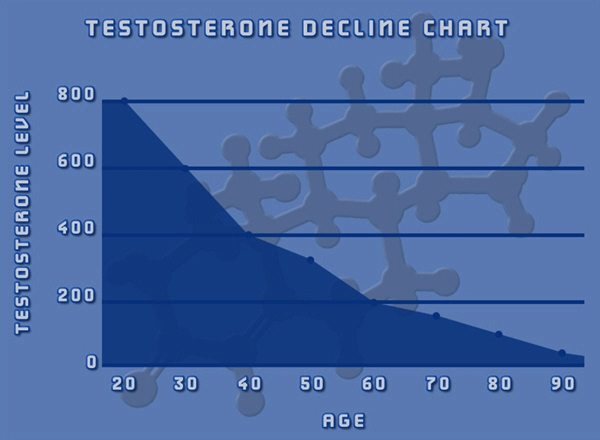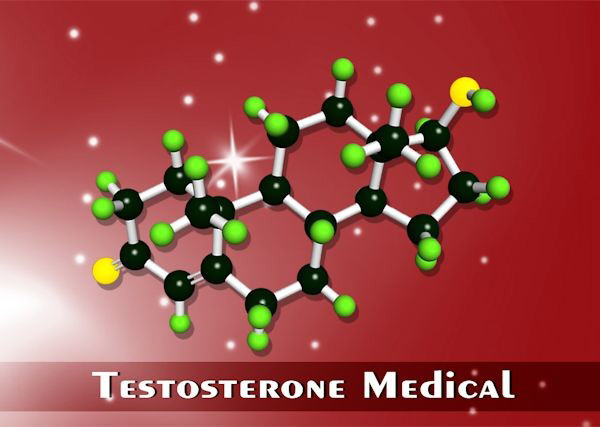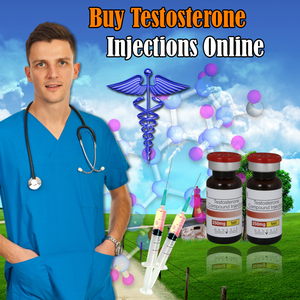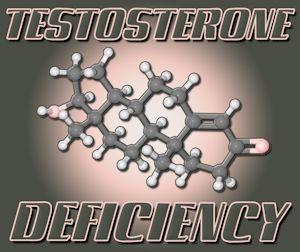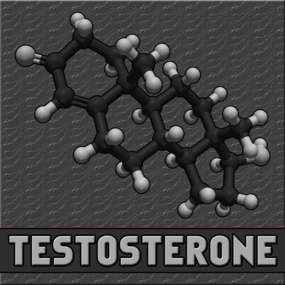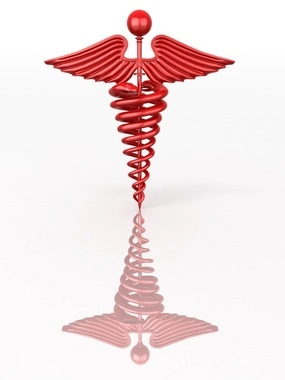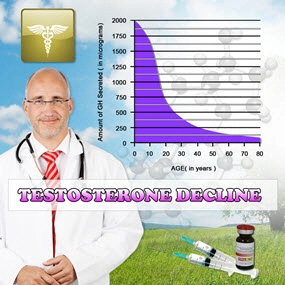An interview with Abraham Morgentaler, M.D.
It could be said that testosterone is what makes men, men. It gives them their characteristic deep voices, large muscles, and facial and body hair, distinguishing them from women. It stimulates the growth of the genitals at puberty, plays a role in sperm production, fuels libido, and contributes to normal erections. It also fosters the production of red blood cells, boosts mood, and aids cognition.
Over time, the testicular machinery that makes testosterone gradually becomes less effective, and testosterone levels start to fall, by about 1% a year, beginning in the 40s. As men get into their 50s, 60s, and beyond, they may start to have signs and symptoms of low testosterone such as lower sex drive and sense of vitality, erectile dysfunction, decreased energy, reduced muscle mass and bone density, and anemia. Taken together, these signs and symptoms are often called hypogonadism (hypo meaning low functioning and gonadism referring to the testicles). Researchers estimate that the condition affects anywhere from two to six million men in the United States. Yet it is an underdiagnosed problem, with only about 5% of those affected receiving treatment.
Studies have shown that testosterone-replacement therapy may offer a wide range of benefits for men with hypogonadism, including improved libido, mood, cognition, muscle mass, bone density, and red blood cell production. But little consensus exists on what constitutes low testosterone, when testosterone supplementation makes sense, or what risks patients face. Much of the current debate focuses on the long-held belief that testosterone may stimulate prostate cancer.
Dr. Abraham Morgentaler, an associate professor of surgery at Harvard Medical School and the director of Mens Health Boston, specializes in treating prostate diseases and male sexual and reproductive difficulties. He has developed particular expertise in treating low testosterone levels. In this interview, Dr. Morgentaler shares his views on current controversies, the treatment strategies he uses with his own patients, and why he thinks experts should reconsider the possible link between testosterone-replacement therapy and prostate cancer.
What signs and symptoms of low testosterone prompt the average man to see a doctor?
As a urologist, I tend to see men because they have sexual complaints. The primary hallmark of low testosterone is low sexual desire or libido, but another can be erectile dysfunction, and any man who complains of erectile dysfunction should get his testosterone level checked. Men may experience other symptoms, such as more difficulty achieving an orgasm, less-intense orgasms, a smaller amount of fluid from ejaculation, and a feeling of numbness in the penis when they see or experience something that would normally be arousing.
The more of these symptoms there are, the more likely it is that a man has low testosterone. Many physicians tend to dismiss these soft symptoms as a normal part of aging, but they are often treatable and reversible by normalizing testosterone levels.
Arent those the same symptoms that men have when theyre treated for benign prostatic hyperplasia, or BPH?
Not exactly. There are a number of drugs that may lessen sex drive, including the BPH drugs finasteride (Proscar) and dutasteride (Avodart). Those drugs can also decrease the amount of the ejaculatory fluid, no question. But a reduction in orgasm intensity usually does not go along with treatment for BPH. Erectile dysfunction does not usually go along with it either, though certainly if somebody has less sex drive or less interest, its more of a challenge to get a good erection.
How do you determine whether a man is a candidate for testosterone-replacement therapy?
There are two ways that we determine whether somebody has low testosterone. One is a blood test and the other is by characteristic symptoms and signs, and the correlation between those two methods is far from perfect. Generally men with the lowest testosterone have the most symptoms and men with highest testosterone have the least. But there are some men who have low levels of testosterone in their blood and have no symptoms.
Looking purely at the biochemical numbers, The Endocrine Society* considers low testosterone to be a total testosterone level of less than 300 ng/dl, and I think thats a reasonable guide. But no one quite agrees on a number. Its not like diabetes, where if your fasting glucose is above a certain level, theyll say, Okay, youve got it. With testosterone, that break point is not quite as clear.
Is total testosterone the right thing to be measuring? Or should we be measuring something else?
Well, this is another area of confusion and great debate, but I dont think its as confusing as it appears to be in the literature. When most doctors learned about testosterone in medical school, they learned about total testosterone, or all the testosterone in the body. But about half of the testosterone thats circulating in the bloodstream is not available to the cells. Its tightly bound to a carrier molecule called sex hormonebinding globulin, which we abbreviate as SHBG.
The biologically available part of total testosterone is called free testosterone, and its readily available to the cells. Almost every lab has a blood test to measure free testosterone. Even though its only a small fraction of the total, the free testosterone level is a pretty good indicator of low testosterone. Its not perfect, but the correlation is greater than with total testosterone.
This professional organization recommends testosterone therapy for men who have both
Therapy is not recommended for men who have
Do time of day, diet, or other factors affect testosterone levels?
For years, the recommendation has been to get a testosterone value early in the morning because levels start to drop after 10 or 11 a.m. But the data behind that recommendation were drawn from healthy young men. Two recent studies showed little change in blood testosterone levels in men 40 and older over the course of the day. One reported no change in average testosterone until after 2 p.m. Between 2 and 6 p.m., it went down by 13%, a modest amount, and probably not enough to influence diagnosis. Most guidelines still say its important to do the test in the morning, but for men 40 and above, it probably doesnt matter much, as long as they get their blood drawn before 5 or 6 p.m.
There are some very interesting findings about diet. For example, it appears that individuals who have a diet low in protein have lower testosterone levels than men who consume more protein. But diet hasnt been studied thoroughly enough to make any clear recommendations.
In this article, testosterone-replacement therapy refers to the treatment of hypogonadism with exogenous testosterone testosterone that is manufactured outside the body. Depending on the formulation, treatment can cause skin irritation, breast enlargement and tenderness, sleep apnea, acne, reduced sperm count, increased red blood cell count, and other side effects.
Preliminary research has shown that clomiphene citrate (Clomid), a drug generally prescribed to stimulate ovulation in women struggling with infertility, can foster the production of natural testosterone, termed endogenous testosterone, in men. In a recent prospective study, 36 hypogonadal men took a daily dose of clomiphene citrate for at least three months. Within four to six weeks, all of the men had heightened levels of testosterone; none reported any side effects during the year they were followed.
Because clomiphene citrate is not approved by the FDA for use in men, little information exists about the long-term effects of taking it (including the risk of developing prostate cancer) or whether it is more effective at boosting testosterone than exogenous formulations. But unlike exogenous testosterone, clomiphene citrate preserves and possibly enhances sperm production. That makes drugs like clomiphene citrate one of only a few choices for men with low testosterone who want to father children.
What forms of testosterone-replacement therapy are available?*
The oldest form is an injection, which we still use because its inexpensive and because we reliably get good testosterone levels in nearly everybody. The disadvantage is that a man needs to come in every few weeks to get a shot. A roller-coaster effect can also occur as blood testosterone levels peak and then return to baseline. [See Exogenous vs. endogenous testosterone, above.]
Topical therapies help maintain a more uniform level of blood testosterone. The first form of topical therapy was a patch, but it has a very high rate of skin irritation. In one study, as many as 40% of men who used the patch developed a red area on their skin. That limits its use.
The most commonly used testosterone preparation in the United States and the one I start almost everyone off with is a topical gel. There are two brands: AndroGel and Testim. The gel comes in miniature tubes or in a special dispenser, and you rub it on your shoulders or upper arms once a day. Based on my experience, it tends to be absorbed to good levels in about 80% to 85% of men, but that leaves a substantial number who dont absorb enough for it to have a positive effect. [For specifics on various formulations, see table below.]
Are there any drawbacks to using gels? How long does it take for them to work?
Men who start using the gels have to come back in to have their testosterone levels measured again to make sure theyre absorbing the right amount. Our target is the mid to upper range of normal, which usually means around 500 to 600 ng/dl. The concentration of testosterone in the blood actually goes up quite quickly, within a few doses. I usually measure it after two weeks, though symptoms may not change for a month or two.
What about pills?
There are pills in the United States for testosterone supplementation, but their use is strongly discouraged because they cause significant liver toxicity. A safe oral formulation called testosterone undecanoate is available in Canada and in Europe, but not in the United States. Whats quite exciting is that an injectable version of testosterone undecanoate (Nebido) was submitted to the FDA for approval in August 2007. (Its already approved in many other countries.) It lasts for 12 weeks, so a patient could come in and get a shot about four times a year. [Editors note: In December 2009, the brand name of the drug in the United States was changed to Aveed. As of January 2011, it was still awaiting FDA approval.]
Cherrier MM, Asthana MD, Plymate S, et al. Testosterone Supplementation Improves Spatial and Verbal Memory in Healthy Older Men. Neurology 2001;57:8088. PMID: 11445632.
Isidori AM, Giannetta E, Greco EA, et al. Effects of Testosterone on Body Composition, Bone Metabolism and Serum Lipid Profile in Middle-aged Men: A Meta-analysis. Clinical Endocrinology 2005;63:28093. PMID:16117815.
Liu PY, Swerdloff RS, Veldhuis JD. Clinical Review 171: The Rationale, Efficacy and Safety of Androgen Therapy in Older Men: Future Research and Current Practice Recommendations. Journal of Clinical Endocrinology and Metabolism 2004; 89:478996. PMID: 15472164.
Moffat SD, Zonderman AB, Metter EJ, et al. Longitudinal Assessment of Serum Free Testosterone Concentration Predicts Memory Performance and Cognitive Status in Elderly Men. Journal of Clinical Endocrinology and Metabolism 2002;87:50017. PMID: 12414864.
Wang C, Cunningham G, Dobs A, et al. Long-term Testosterone Gel (AndroGel) Treatment Maintains Beneficial Effects on Sexual Function and Mood, Lean and Fat Mass, and Bone Mineral Density in Hypogonadal Men. Journal of Clinical Endocrinology and Metabolism 2004;89:208598. PMID: 15126525.
Other than improvement in sexual symptoms, what are some of the potential benefits of testosterone-replacement therapy?
Some studies have looked at testosterone therapy and cognition. Although the findings werent definitive, there was some evidence of cognitive improvement. Other studies have shown that it improves mood. Testosterone therapy has also been shown to be effective in the treatment of osteoporosis and in increasing muscle bulk and strength. [See Testosterones impact on brain, bone, and muscle, above.]
What risks do you consider when prescribing testosterone-replacement therapy?
When patients ask about risks, I remind them that they already have testosterone in their system and that the goal of testosterone treatment is to restore its concentration back to what it was 10 or 15 years previously. And the molecule itself that we give is identical to the one that their bodies make naturally, so in theory, everything should be hunky-dory. But in practice, there are always some curveballs.
For example, testosterone can increase the hematocrit, the percentage of red blood cells in the bloodstream. If the hematocrit goes up too high, we worry about the blood becoming too viscous or thick, possibly predisposing someone to stroke or clotting events. Although, frankly, in a review that I wrote in the New England Journal of Medicine* where we reviewed as much of this as we could, we found no cases of stroke or severe clotting related to testosterone therapy. Nevertheless, the risk exists, so we want to be careful about giving testosterone to men who already have a high hematocrit, such as those with chronic obstructive pulmonary disease, or those who have a red-blood-cell disorder.
Although its rare to see swelling caused by fluid retention, physicians need to be careful when prescribing testosterone to men with compromised kidney or liver function, or some degree of congestive heart failure. It can also increase the oiliness of the skin, so that some men get acne or pimples, but thats quite uncommon, as are sleep apnea and gynecomastia (breast enlargement).
What about the risk of developing prostate cancer?
I think that the biggest hurdle for most physicians prescribing testosterone is the fear that theyre going to promote prostate cancer. [See Incongruous findings, below.] Thats because more than six decades ago, it was shown that if you lowered testosterone in men whose prostate cancer had metastasized, their condition improved. (It became a standard therapy that we still use today for men with advanced prostate cancer. We call it androgen deprivation or androgen-suppressive therapy.) The thinking became that if lowering testosterone makes prostate cancer disappear, at least for a while, then raising it must make prostate cancer grow. But even though its been a widely held belief for six decades, no one has found any additional evidence to support the theory.
Havent there been any studies that follow men who go on testosterone-replacement therapy to see what their rate of cancer is compared with that in men who are not on it?
As with a number of treatments or medicines that have been around for a long, long time, it hasnt been scrutinized like a new drug would be. And although theyve been discussed, there arent any large-scale, randomized controlled clinical trials of testosterone-replacement therapy under way. [See A male equivalent to the Womens Health Initiative? below.]
There have been a number of smaller studies on men receiving testosterone-replacement therapy, and if you look at the results cumulatively, the rate of prostate cancer in these men was about 1% per year. If you look at men who show up for prostate cancer screening, same sort of age population, the rate tends to be about the same. You have to be cautious in comparing studies and combining the results, but theres no signal in these results that testosterone-replacement therapy creates an unexpectedly high rate of prostate cancer.
We also have epidemiologic studies, like the Physicians Health Study, the Baltimore Longitudinal Study of Aging, and the Massachusetts Male Aging Study, that include tens of thousands of men who are followed for 5, 10, 15, or even 20 years. At the end of the study period, the researchers see who developed prostate cancer and who didnt. They can then look at blood samples taken at the start of the study to see if, for example, the group that got prostate cancer had a higher level of testosterone over all. About 500,000 men have been entered in some 20 trials of this type around the world. Not one of those studies has shown a definitive correlation between prostate cancer and total testosterone. Three or four have shown weak associations, but none of those have been confirmed in subsequent studies.
Another point Id like to make for people worried about a link between high testosterone and prostate cancer is that it just doesnt make sense. Prostate cancer becomes more prevalent in men as they age, and thats also when their testosterone levels decline. We almost never see it in men in their peak testosterone years, in their 20s for instance. We know from autopsy studies that 8% of men in their 20s already have tiny prostate cancers, so if testosterone really made prostate cancer grow so rapidly we used to talk about it like it was pouring gasoline on a fire we should see some appreciable rate of prostate cancer in men in their 20s. We dont. So, Im no longer worried that giving testosterone to men will make their hidden cancer grow, because Im convinced that it doesnt happen.
Can testosterone worsen BPH?
The evidence shows that testosterone treatment does not change the strength or rate of urine flow, does not change the ability to empty the bladder, and does not change other symptoms such as frequency or urgency of urination, as assessed by the American Urological Association Symptom Score or the International Prostate Symptom Score. Ive had a couple of patients over the years who had some worsening of urinary symptoms with testosterone, but thats rare, even with long-term use.
Studies have come to conflicting conclusions about whether high levels of testosterone increase the risk of developing prostate cancer. A sampling of studies that have helped drive the controversy follows.
Increases in cancer risk
Parsons JK, Carter HB, Platz EA, et al. Serum Testosterone and the Risk of Prostate Cancer: Potential Implications for Testosterone Therapy. Cancer Epidemiology, Biomarkers, and Prevention 2005;14:225760. PMID: 16172240.
Shaneyfelt T, Husein R, Bubley G, et al. Hormonal Predictors of Prostate Cancer: A Meta-Analysis. Journal of Clinical Oncology 2000;18:84753. PMID: 10673527.
No effect or decreases in cancer risk
Eaton NE, Reeves GK, Appleby PB, et al. Endogenous Sex Hormones and Prostate Cancer: A Quantitative Review of Prospective Studies. British Journal of Cancer 1999;80:93034. PMID: 10362098.
Mohr BA, Feldman HA, Kalish LA, et al. Are Serum Hormones Associated with the Risk of Prostate Cancer? Prospective Results from the Massachusetts Male Aging Study. Urology 2001;57:93035. PMID: 11337297.
Morgentaler A. Testosterone and Prostate Cancer: An Historical Perspective on a Modern Myth. European Urology 2006;50:93539. PMID: 16875775.
Mixed findings
Slater S, Oliver RT. Testosterone: Its Role in the Development of Prostate Cancer and Potential Risks from Use as Hormone Replacement Therapy. Drugs and Aging 2000;17:43139. PMID: 11200304.
Whats your strategy for the concomitant administration of erectile dysfunction drugs?
My preference is to start men on testosterone, for a couple of reasons. First, if a man has successful return of his own erections, its like a home run for him. He doesnt have to take a pill in anticipation of having sex. He can have sex whenever he wants. Second, the benefits of testosterone-replacement therapy often go way beyond erectile dysfunction. That may be what brought the patient into the office originally, but then he comes back saying how much better he feels in general, how much more energetic and motivated he is, how his drives on the golf course seem to be going farther, and how his mood is better.
But if somebody fails testosterone therapy, meaning that their erections arent any better, Ive said, Well, lets stop the testosterone and try one of the PDE5, or phosphodiesterase type 5, inhibitors sildenafil (Viagra), tadalafil (Cialis), and vardenafil (Levitra). A lot of patients then say, Well, actually, Id like to stay on the testosterone. True, its not helping my erections, but Im more turned on, and Im getting these other benefits. So we often continue the testosterone and add a PDE5 inhibitor.
Theres a significant failure rate of the PDE5 inhibitors for erectile dysfunction, something on the order of 25% to 50%, depending on the underlying condition. It turns out that a third of those men will have adequate erections with testosterone-replacement therapy alone and another third will have adequate erections with the pills and testosterone combined. Theres still a third who dont respond, but normalizing their testosterone level has definitely rescued many men who had failed on PDE5 inhibitors.
In 2002, the federally sponsored Womens Health Initiative (WHI) stopped its hormone replacement therapy (HRT) trial (estrogen plus progestin), which included more than 16,000 women, three years early because those taking the pills had an increased risk of developing breast cancer and blood clots, and an increased risk of suffering a stroke or heart attack than those taking a placebo. The findings ran counter to the long-held belief that HRT could preserve health and trim heart-disease risk in women.
Unlike previous studies of HRT, which had been observational in nature, the WHI was a double-blind, randomized controlled trial. The gold standard of scientific inquiry, these trials can conclusively test theories and assess cause and effect.
To date, no large, double-blind, randomized controlled studies of a link between testosterone treatment and prostate cancer have been completed. In its 2004 report, the Institute of Medicine (IOM) committee studying the need for clinical trials of testosterone-replacement therapy noted that only 31 placebo-controlled studies had been done in older men, with the largest one enrolling just 108 participants. Most of these studies lasted only six months.
The IOM report estimated that a study of whether there is an increased risk of prostate cancer in men on testosterone therapy might require following 5,000 men for three to five years. Before launching such an endeavor, the report recommended more firmly establishing the effectiveness of testosterone-replacement therapy, saying that studies of long-term risks and benefits should be conducted only after short-term efficacy has been proven. That means the male equivalent of the WHI remains far off.
Whats your thinking on performing a prostate biopsy before prescribing testosterone therapy?
I started doing prostate biopsies before putting men on testosterone therapy because the fear had always been that a hidden cancer might grow due to increased testosterone. It was also believed that low testosterone was protective. Well, we found prostate cancer in one of the first men with low testosterone we biopsied, even though his PSA level and digital rectal exam (DRE) were normal. As we did more of these, we found more and more cases, about one out of seven, despite normal DRE and normal PSA. When we had data for 77 men and the cancer rate was about the same, 14%, the Journal of the American Medical Association published our findings. At the time, that rate of prostate cancer in men with normal PSA was several times higher than anything published previously, and it approximated the risk of men who had an elevated PSA or an abnormal DRE. That was in 1996.
In a subsequent study of 345 men with normal PSA and low testosterone, we found the cancer rate was similar: 15%. And we had a large enough group to look at the impact of testosterone on cancer risk. For men whose total testosterone or free testosterone value was in the lowest third, the odds of having a positive biopsy were double the odds in the rest of the men. Thats the first evidence that low testosterone may be an independent predictor for the development of prostate cancer.
That would argue for doing a routine prostate biopsy on anyone considering testosterone-replacement therapy.
Its not universally accepted, but thats what I do. Several recent studies have shown that low testosterone is associated with higher Gleason scores, with advanced-stage prostate cancer, and, even worse, with shorter survival times. [See Low testosterone, PSA, and prostate cancer, below.]
What recommendations do you have for monitoring once testosterone therapy begins?
The general recommendation is that men 50 and older who are candidates for testosterone therapy should have a DRE and a PSA test. If either is abnormal, the man should be evaluated further for prostate cancer, which is what we do with everybody whether they have low testosterone or not. That means a biopsy. But if all of those results are normal, then we can initiate testosterone therapy. The monitoring that needs to happen for men who begin testosterone therapy is really very simple: DRE, PSA, and a blood test for hematocrit or hemoglobin, once or twice in the first year and then yearly after that, which is pretty much what we recommend for most men over age 50 anyway.
Morgentaler A, Rhoden EL. Prevalence of Prostate Cancer Among Hypogonadal Men with Prostate-Specific Antigen Levels of 4.0 ng/dL or less. Urology 2006;68:126367. PMID: 17169647.
Morgentaler A, Bruning CO 3rd, DeWolf WC. Occult Prostate Cancer in Men with Low Serum Testosterone Levels. Journal of the American Medical Association 1996;276:19046. PMID: 8968017.
Massengill JC, Sun L, Moul JW, et al. Pretreatment Total Testosterone Level Predicts Pathological Stage in Patient with Localized Prostate Cancer Treated with Radical Prostatectomy. Journal of Urology 2003;169:16705. PMID: 12686805.
Isom-Batz G, Bianco FJ Jr, Kattan MW, et al. Testosterone as a Predictor of Pathological Stage in Clinically Localized Prostate Cancer. Journal of Urology 2005;173:193537. PMID: 15879785.
What changes do you see taking place on the testosterone front over the next five years?
I think that the importance of testosterone for cardiovascular health is going to be increasingly recognized. In the past, because men die of heart attacks more often than women and men have more testosterone, the fear has been that testosterone causes heart problems. But every single study of whether testosterone is bad for the heart has been negative, and what people havent pointed out in most of those negative studies is that there may be a beneficial effect.
I think well also find out in five years that there very well may be general health benefits of having normal testosterone compared to low testosterone. There are growing data for all-cause mortality that men who have low testosterone die earlier than those who have normal testosterone. A study by the Veterans Administration reported about a year ago showed low testosterone levels were associated with a dramatically increased mortality rate. Its hard to know why that is, but I think well be focused on that in the coming years.
Any closing thoughts?
I think that low testosterone is under-recognized, its effects are greatly underappreciated, and its diagnosis isnt readily understood. This is an area that has tremendous research potential in the coming years.*
Originally published March 2009; last reviewed February 18, 2011.
[] of whats going on in your blood stream at a single point in time. Here is a good start for you sir A Harvard expert shares his thoughts on testosterone-replacement therapy Harvard Health Publicatio Good luck on your quest, it seems you have a really long way to go Are you looking for []
[] enlargement). *Source: New England Journal of Medicine 2004;350:482***8211;92. PMID: 14749457. A Harvard expert shares his thoughts on testosterone-replacement therapy Harvard Health Publicatio Are you looking for Dr Prescribed Testosterone? Contact us Now! Click here for your Free []
[] the other side, according to the Harvard University papers, prostate medications may cause sexual dysfunction. Dr. Morgentaler, for instance, states: There []
Fermin
An interesting and well balanced dissertation on such a popular subject.
Gary Newcomb
55+ million men in america between 40 and 70 years of age is a large enough group to warrant interest in a thorough study of the aged male delivery system and other sex related issues. There is a good chance there are 55 million women out there wishing for some kind of help also. Those are significant numbers, about 1/3 of the total population and the lions share of the income producers. And the best the medical community can do is speculate at the real cause for a significant cancer? Perhaps prostate cancer is the real cause of global warming, there is no real science unless there is a real paycheck?
Carole
What about hair loss in administering hormone replacement therapy with AndroGel?
Anofuctus
Carole, you can find your answers on the Internet. Kids took my hair out.
No
I started testosterone therapy in January 25th 2014. Original Levels 206 total and 3.5 free. Now I am 1350 total and 125 free. I can honestly say I have felt no different. Still just as tired, Sexual interest is very high as it was before therapy. I am over weight with a fat belly. My biggest complaint is feeling tired. That has not changed. My weight increased a .little since beginning therapy. Who knows??
See the article here:
A Harvard expert shares his thoughts on testosterone ...
Contact Us Today For A Free Consultation

- Adverse Effects of Testosterone Therapy in Adult Men: A Systematic Review and Meta-Analysis [Last Updated On: July 2nd, 2024] [Originally Added On: June 4th, 2010]
- Low Testosterone Levels, Foods That Increase Testosterone Levels wwwSelf-Improvement-Bible.com [Last Updated On: November 12th, 2023] [Originally Added On: May 30th, 2011]
- Low Testosterone in Men: The Next Big Thing in Medicine! - Abraham Morgentaler, MD [Last Updated On: May 7th, 2023] [Originally Added On: June 3rd, 2011]
- How To Determine Testosterone Levels By Looking At Your Ring Finger [Last Updated On: December 7th, 2017] [Originally Added On: June 30th, 2011]
- Prolab Horny Goat Weed Testosterone Booster Supplement Review [Last Updated On: November 23rd, 2023] [Originally Added On: July 19th, 2011]
- The Healthy Skeptic: Products make testosterone claims [Last Updated On: August 13th, 2024] [Originally Added On: September 11th, 2011]
- How To Naturally Increase Testosterone [Last Updated On: November 21st, 2023] [Originally Added On: September 28th, 2011]
- Testosterone Production - Video [Last Updated On: November 25th, 2024] [Originally Added On: November 20th, 2011]
- Testosterone makes us less cooperative and more egocentric, study finds [Last Updated On: January 23rd, 2018] [Originally Added On: February 1st, 2012]
- Testosterone makes us less cooperative and more egocentric [Last Updated On: January 24th, 2018] [Originally Added On: February 1st, 2012]
- Too much testosterone makes for bad decisions, tests show [Last Updated On: May 4th, 2015] [Originally Added On: February 1st, 2012]
- Today in Research: Testosterone's Negative Effects; Diet Soda Death [Last Updated On: January 2nd, 2018] [Originally Added On: February 2nd, 2012]
- Testosterone drives ego, trips cooperation [Last Updated On: December 2nd, 2017] [Originally Added On: February 4th, 2012]
- FDA approves BioSante/Teva's testosterone gel [Last Updated On: May 4th, 2015] [Originally Added On: February 15th, 2012]
- 'Manly' Fingers Make For Strong Jawline in Young Boys [Last Updated On: December 1st, 2017] [Originally Added On: February 15th, 2012]
- Teva, BioSante Win U.S. Approval for Testosterone Therapy [Last Updated On: December 10th, 2017] [Originally Added On: February 15th, 2012]
- BioSante Gains on Approval of Testosterone Gel: Chicago Mover [Last Updated On: January 8th, 2018] [Originally Added On: February 16th, 2012]
- BioSante soars following drug approval from FDA [Last Updated On: December 26th, 2017] [Originally Added On: February 16th, 2012]
- Antibodies, Not Hard Bodies: The Real Reason Women Drool Over Brad Pitt [Last Updated On: December 24th, 2017] [Originally Added On: February 21st, 2012]
- Almark Publishing Releases Book From Mark Rosenberg, M.D. Revealing Natural Discoveries Associated With Low ... [Last Updated On: May 4th, 2015] [Originally Added On: February 28th, 2012]
- Testosterone Replacement Clinic Comes to Kansas City with Potential to Help Thousands of Men [Last Updated On: May 4th, 2015] [Originally Added On: March 1st, 2012]
- Study examines the relative roles of testosterone and its metabolite, dihydrotestosterone in men [Last Updated On: December 2nd, 2017] [Originally Added On: March 7th, 2012]
- The Role of 5{alpha}-Reductase Inhibition in Men Receiving Testosterone Replacement Therapy [Editorial] [Last Updated On: December 21st, 2017] [Originally Added On: March 7th, 2012]
- Effect of Testosterone Supplementation With and Without a Dual 5{alpha}-Reductase Inhibitor on Fat-Free Mass in Men ... [Last Updated On: January 3rd, 2018] [Originally Added On: March 7th, 2012]
- Why We Like Men Who Can Keep Their Cool [Last Updated On: December 30th, 2017] [Originally Added On: March 7th, 2012]
- Testosterone And Heart Health [Last Updated On: May 4th, 2015] [Originally Added On: March 10th, 2012]
- Your Life on Testosterone: Overly Sure of Yourself, Unwilling to Listen [Last Updated On: November 25th, 2018] [Originally Added On: March 15th, 2012]
- Mayo Clinic-TGen study role testosterone may play in triple negative breast cancer [Last Updated On: December 8th, 2017] [Originally Added On: March 23rd, 2012]
- A dose of testosterone might not cure what ails you [Last Updated On: January 23rd, 2018] [Originally Added On: March 25th, 2012]
- Green tea could aid athletes hide testosterone doping [Last Updated On: December 16th, 2017] [Originally Added On: March 25th, 2012]
- TGen Study Role Testosterone May Play in Triple Negative Breast Cancer [Last Updated On: December 6th, 2017] [Originally Added On: March 26th, 2012]
- Testosterone low, but responsive to competition, in Amazonian tribe [Last Updated On: January 23rd, 2018] [Originally Added On: March 28th, 2012]
- Competition-linked bursts of testosterone are fundamental aspect of human biology, study of Amazonian tribe suggests [Last Updated On: December 25th, 2017] [Originally Added On: March 28th, 2012]
- Playing football boosts testosterone levels by 30 percent! [Last Updated On: February 4th, 2024] [Originally Added On: March 28th, 2012]
- Testosterone low, but responsive to competition, in Amazonian tribe -- with slideshow [Last Updated On: December 9th, 2017] [Originally Added On: March 28th, 2012]
- The benefits of testosterone pellet therapy [Last Updated On: January 24th, 2018] [Originally Added On: March 29th, 2012]
- Low testosterone levels cause health woes [Last Updated On: November 25th, 2018] [Originally Added On: March 30th, 2012]
- Heart Failure Patients Getting Relief from Testosterone Supplements [Last Updated On: May 4th, 2015] [Originally Added On: April 21st, 2012]
- Study Finds Fatherhood Suppresses Testosterone [Last Updated On: May 4th, 2015] [Originally Added On: May 3rd, 2012]
- Low testosterone levels could raise diabetes risk for men [Last Updated On: January 26th, 2018] [Originally Added On: May 5th, 2012]
- Why low testosterone may increase your risk of diabetes [Last Updated On: November 25th, 2024] [Originally Added On: May 5th, 2012]
- Diabetes link to low testosterone [Last Updated On: November 25th, 2024] [Originally Added On: May 5th, 2012]
- Testosterone Linked to Weight Loss in Obese Men [Last Updated On: January 2nd, 2018] [Originally Added On: May 11th, 2012]
- Testosterone may help weight loss [Last Updated On: November 25th, 2024] [Originally Added On: May 11th, 2012]
- Testosterone-fuelled infantile males might be a product of Mom's behaviour [Last Updated On: December 25th, 2017] [Originally Added On: May 11th, 2012]
- Testosterone-fueled infantile males might be a product of Mom's behavior [Last Updated On: January 6th, 2018] [Originally Added On: May 11th, 2012]
- Testosterone supplements may help obese men lose weight [Last Updated On: January 5th, 2018] [Originally Added On: May 11th, 2012]
- Testosterone supplements 'can help men lose their middle-aged spread' [Last Updated On: November 25th, 2024] [Originally Added On: May 12th, 2012]
- Some doctors question safety of testosterone replacement therapy [Last Updated On: January 20th, 2018] [Originally Added On: May 15th, 2012]
- Health Canada Approves New Testosterone Topical Solution for Men [Last Updated On: May 4th, 2015] [Originally Added On: May 15th, 2012]
- Environment trumps genes in testosterone levels, study finds [Last Updated On: May 4th, 2015] [Originally Added On: May 15th, 2012]
- Global Testosterone Replacement Therapy (TRT) Industry [Last Updated On: May 4th, 2015] [Originally Added On: May 21st, 2012]
- Testosterone Fuels Boom, Swindler Sows Panic: Top Business Books [Last Updated On: January 13th, 2018] [Originally Added On: June 2nd, 2012]
- Increase in testosterone drug use [Last Updated On: April 12th, 2018] [Originally Added On: June 4th, 2012]
- Testosterone Promotes Agression Automatically [Last Updated On: January 29th, 2018] [Originally Added On: June 9th, 2012]
- Testosterone shown to help sexually frustrated women [Last Updated On: January 27th, 2018] [Originally Added On: June 9th, 2012]
- Research and Markets: Testosterone Replacement Therapy (TRT) - Global Strategic Business Report [Last Updated On: December 23rd, 2017] [Originally Added On: June 12th, 2012]
- Proposed testosterone testing of some female olympians challenged by Stanford scientists [Last Updated On: January 30th, 2018] [Originally Added On: June 14th, 2012]
- Testosterone Makes Bosses Into Jerks, Says Paul Zak [Last Updated On: January 8th, 2018] [Originally Added On: June 14th, 2012]
- Testosterone Therapy: A Misguided Approach to Erectile Dysfunction (ED) [Last Updated On: May 4th, 2015] [Originally Added On: June 20th, 2012]
- New drugs, new ways to target androgens in prostate cancer therapy [Last Updated On: January 8th, 2018] [Originally Added On: June 20th, 2012]
- Long-term testosterone treatment for men results in reduced weight and waist size [Last Updated On: January 19th, 2018] [Originally Added On: June 23rd, 2012]
- Declining testosterone levels in men not part of normal aging, study finds [Last Updated On: December 27th, 2017] [Originally Added On: June 23rd, 2012]
- Low testosterone not normal part of aging [Last Updated On: December 22nd, 2017] [Originally Added On: June 25th, 2012]
- Testosterone Does Not Necessarily Wane With Age [Last Updated On: December 6th, 2017] [Originally Added On: June 25th, 2012]
- Overweight men can boost low testosterone levels by losing weight [Last Updated On: December 10th, 2017] [Originally Added On: June 25th, 2012]
- Testosterone-replacement therapy improves symptoms of metabolic syndrome [Last Updated On: January 14th, 2018] [Originally Added On: June 26th, 2012]
- Testosterone therapy takes off pounds [Last Updated On: December 11th, 2017] [Originally Added On: June 26th, 2012]
- Weight loss may boost men's testosterone [Last Updated On: May 4th, 2015] [Originally Added On: June 27th, 2012]
- Low Testosterone? Study finds age may not be to blame [Last Updated On: May 4th, 2015] [Originally Added On: July 1st, 2012]
- Do you have low testosterone? [Last Updated On: December 15th, 2017] [Originally Added On: July 8th, 2012]
- Wall Streeters Buying Testosterone for an Edge [Last Updated On: May 4th, 2015] [Originally Added On: July 12th, 2012]
- Beefy Wall Street Traders rub on testosterone [Last Updated On: February 20th, 2024] [Originally Added On: July 12th, 2012]
- Tale of two runners exposes flawed Olympic thinking [Last Updated On: December 23rd, 2024] [Originally Added On: July 19th, 2012]
- Genetic markers for testosterone and estrogen level regulation identified [Last Updated On: January 6th, 2018] [Originally Added On: July 20th, 2012]
- BUSM researchers identify genetic markers for testosterone, estrogen level regulation [Last Updated On: December 18th, 2017] [Originally Added On: July 20th, 2012]
- DRS. OZ AND ROIZEN: How to reap the benefits of normal testosterone levels [Last Updated On: December 23rd, 2024] [Originally Added On: July 21st, 2012]
- How Testosterone Drives History [Last Updated On: December 24th, 2024] [Originally Added On: July 22nd, 2012]
- Testosterone replacement is "fountain of youth" for men [Last Updated On: January 3rd, 2018] [Originally Added On: July 27th, 2012]
- Pill for low testosterone in men heads for phase II clinical trials [Last Updated On: December 31st, 2017] [Originally Added On: August 2nd, 2012]
Word Count: 4657

